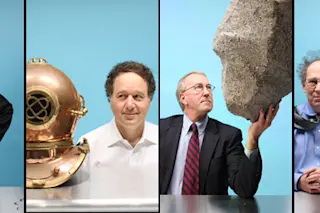In the list of world challenges, global warming might be at once the most alarming and the most controversial. According to some predictions, climate change caused by human activity could cause mass extinction in the oceans, redraw the planet’s coastlines, and ravage world food supplies. At the same time, a significant portion of the American public questions whether global warming will really cause any major harm; many still doubt that human-driven warming is happening at all. How can we settle the debate? And can we intervene in the process or find ways to adapt to the new conditions? In conjunction with the National Science Foundation and the San Francisco Exploratorium, DISCOVER brought together four experts to discuss the reality and meaning of climate change. In a highly nuanced exchange of ideas, these researchers weighed the various scenarios and laid out a road map for navigating the warmer world to come. ...
The State of the Climate—and of Climate Science
Four scientists discuss where the climate is and where it's going.

Newsletter
Sign up for our email newsletter for the latest science news
Published in:
More on Discover
Stay Curious
SubscribeTo The Magazine
Save up to 40% off the cover price when you subscribe to Discover magazine.
Subscribe













